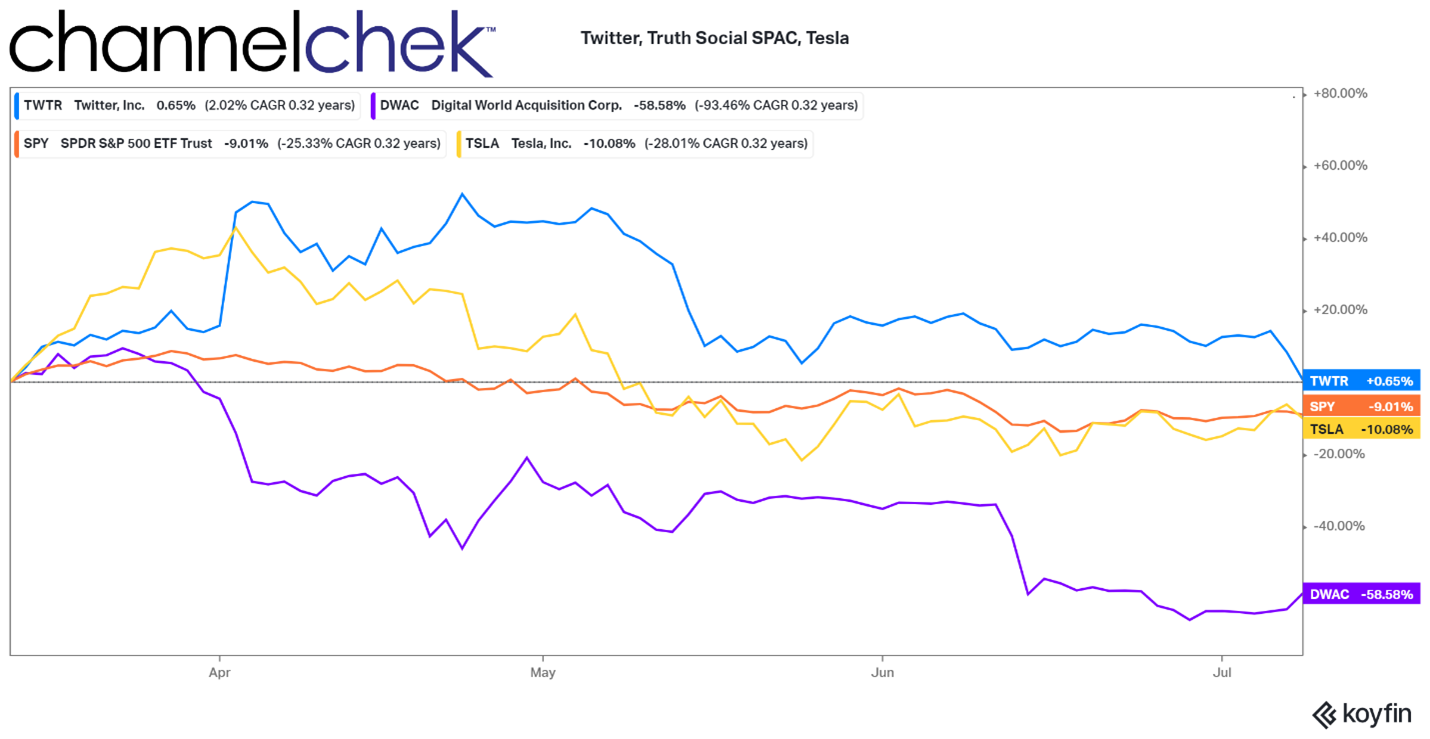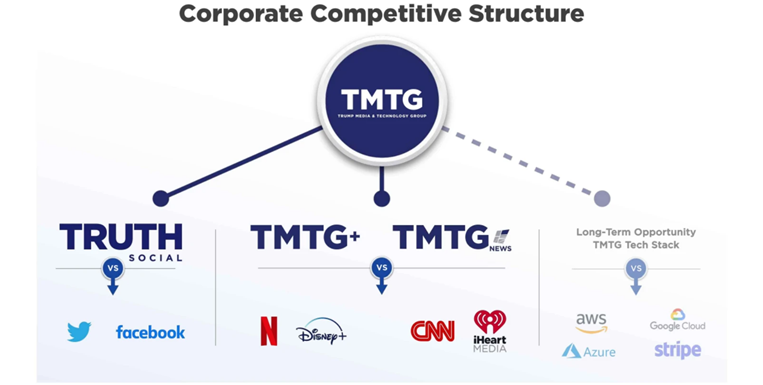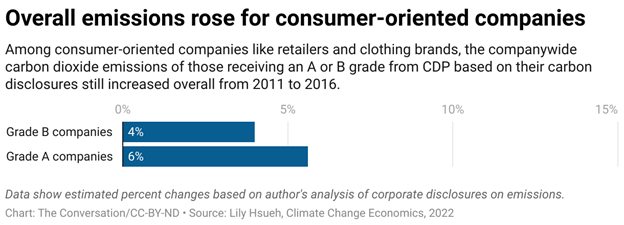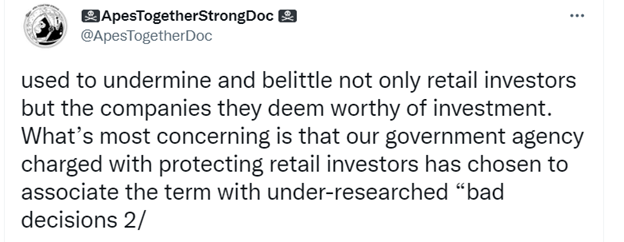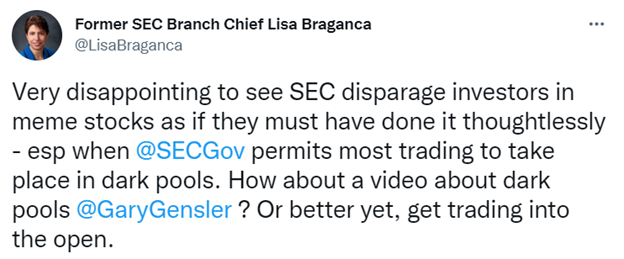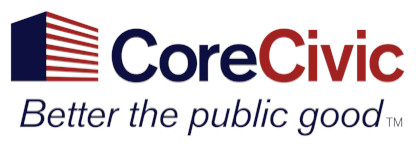
CoreCivic Reports Second Quarter 2022 Financial Results
Research, News, and Market Data on CoreCivic
Increases Share Buyback
authorization
BRENTWOOD, Tenn., Aug. 02, 2022 (GLOBE NEWSWIRE) — CoreCivic, Inc. (NYSE: CXW) (the Company) announced today its financial results for the second quarter of 2022 and provided an update on several significant transactions, including an increase in its share buyback program.
Damon T. Hininger, CoreCivic’s President and Chief Executive Officer, said, “We are pleased to have entered into an agreement during the second quarter to sell our 1,978-bed McRae Correctional Facility for a sale price of $130.0 million. This sale, which is expected to close later in the third quarter, will result in a gain on sale of $75.0 million to $80.0 million. The sale price represents approximately $66,000 per bed which, when used to approximate the value of our over 70,000 company-owned correctional beds, indicates a real estate value in excess of $4 billion, demonstrating the value of our portfolio. Monetizing this asset will generate additional liquidity, which we can use for general corporate purposes, including for our share repurchase program, which our board just increased to $225.0 million, and/or for additional debt reduction.
Hininger continued, “Our second quarter operations were affected by short-term earnings disruptions from transitioning populations at our La Palma Correctional Center in Arizona from an ICE population to an Arizona population, as a result of the previously announced state contract award, and a challenging labor market. Despite the short-term earnings disruption at the La Palma facility that we expect to normalize in the first quarter of 2023, we continue to make great strides in improving the position of our balance sheet, and we were able to begin returning capital to shareholders through our share repurchase authorization. We are pleased with our operational and financial performance and are confident in the long-term outlook for returning to earnings growth.”
Financial Highlights – Second Quarter 2022
- Total revenue of $456.7 million
- CoreCivic
Safety revenue of $416.4 million
- CoreCivic
Community revenue of $25.8 million
- CoreCivic
Properties revenue of $14.5 million
- Net Income of $10.6 million
- Diluted earnings per share of $0.09
- Adjusted diluted EPS of $0.13
- Funds From Operations per diluted share of $0.28
- Normalized Funds From Operations per diluted share of $0.34
- Adjusted EBITDA of $78.8 million
Second Quarter 2022 Financial Results Compared With Second
Quarter 2021
Net income in the second quarter of 2022 totaled $10.6 million, or $0.09 per diluted share, compared with net income in the second quarter of 2021 of $15.6 million, or $0.13 per diluted share. Adjusted for special items, adjusted net income in the second quarter of 2022 was $16.2 million, or $0.13 per diluted share (Adjusted Diluted EPS), compared with adjusted net income in the second quarter of 2021 of $31.1 million, or $0.25 per diluted share. Special items for each period are presented in detail in the calculation of Adjusted Diluted EPS in the Supplemental Financial Information following the financial statements presented herein. The decline in adjusted per share amounts was primarily the result of transitioning to a new contract with the state of Arizona at our 3,060-bed La Palma Correctional Center in Arizona, the non-renewal of contracts in 2021 with the United States Marshals Service (USMS) at the 1,033-bed Leavenworth Detention Center in Kansas and the 600-bed West Tennessee Detention Facility, and the expiration of a managed-only contract with Marion County, Indiana at the Marion County Jail, which the County replaced with a newly constructed facility. We have two remaining direct contracts with the USMS expiring in 2023 and 2025, and we will work with the USMS to enable it to continue to fulfill its mission. Our renewal rate on owned and controlled facilities remained high at 95% over the previous five years. We believe our renewal rate on existing contracts remains high due to a variety of reasons including the aged and constrained supply of available beds within the U.S. correctional system, our ownership of the majority of the beds we operate, and the cost effectiveness of the services we provide.
Earnings before interest, taxes, depreciation and amortization (EBITDA) was $71.1 million in the second quarter of 2022, compared with $82.1 million in the second quarter of 2021. Adjusted EBITDA was $78.8 million in the second quarter of 2022, compared with $101.7 million in the second quarter of 2021. Adjusted EBITDA decreased from the prior year quarter primarily due to the sale of five non-core properties in our Properties segment and two under-utilized facilities in our Community segment, which generated $4.4 million in Adjusted EBITDA in the second quarter of 2021, the aforementioned transition of offender populations at our La Palma Correctional Center, which resulted in a reduction in EBITDA of $10.8 million, and the aforementioned non-renewal of contracts at three facilities that collectively resulted in a reduction in EBITDA of $4.5 million from the second quarter of 2021 to the second quarter of 2022.
Funds From Operations (FFO) was $34.3 million, or $0.28 per diluted share, in the second quarter of 2022, compared to $11.4 million, or $0.09 per diluted share, in the second quarter of 2021. Normalized FFO, which excludes special items, was $40.7 million, or $0.34 per diluted share, in the second quarter of 2022, compared with $56.0 million, or $0.46 per diluted share, in the second quarter of 2021. Normalized FFO was negatively impacted by the same factors that affected Adjusted EBITDA.
Adjusted Net Income, EBITDA, Adjusted EBITDA, FFO, and Normalized FFO, and, where appropriate, their corresponding per share amounts, are measures calculated and presented on the basis of methodologies other than in accordance with generally accepted accounting principles (GAAP). Please refer to the Supplemental Financial Information and related note following the financial statements herein for further discussion and reconciliations of these measures to net income, the most directly comparable GAAP measure.
New Bank Credit Facility
On May 12, 2022, we entered into a Third Amended and Restated Credit Agreement (New Bank Credit Facility) in an aggregate principal amount of $350.0 million, consisting of a $100.0 million Term Loan A and a revolving credit facility with a borrowing capacity of $250.0 million, which remains undrawn. The New Bank Credit Facility matures in May 2026 and replaced an existing facility (Previous Bank Credit Facility), which was scheduled to expire in April 2023. The interest rates applicable to the New Bank Credit Facility are tiered based on the then-current total leverage ratio. Based on our current total leverage ratio, loans under the New Bank Credit Facility currently bear interest at a base rate plus a margin of 2.25% or at the Bloomberg Short-Term Bank Yield Index (BSBY) rate plus a margin of 3.25%. In connection with obtaining the New Bank Credit Facility, we paid-down the previous Term Loan A by $67.5 million, and recorded a charge of $0.8 million for the write-off of deferred loan costs associated with the Previous Bank Credit Facility.
Additional Debt Repayments
On May 19, 2022, we announced we voluntarily repaid the remaining $124.1 million outstanding principal balance under our Term Loan B, and satisfied all of our outstanding debt obligations under the agreement. We did not incur any prepayment penalties in connection with the repayment of the Term Loan B, which had a scheduled maturity of December 18, 2024. In connection with the prepayment, we recorded a charge of $6.0 million for the write-off of deferred loan costs, original issue discount and fees and expenses associated with the prepayment of the Term Loan B. The prepayment was made in full with cash on hand.
During the second quarter of 2022, we also purchased an additional $3.6 million of our 4.625% Senior Notes at a weighted average price approximately equal to par in open market purchases, reducing the outstanding balance of the 4.625% Senior Notes to $170.1 million.
Share Repurchases
On August 2, 2022, our Board of Directors authorized an increase in our share repurchase program of up to an additional $75.0 million in shares of our common stock. As a result of the increased authorization, the aggregate authorization under our share repurchase program increased from the original authorization of up to $150.0 million in shares of our common stock to up to $225.0 million shares of our common stock. Since May 16, 2022 through August 1, 2022, we have repurchased 4.2 million shares of our common stock at an aggregate purchase price of $50.6 million, excluding fees, commissions and other costs related to repurchases.
We currently have approximately $174.4 million remaining under the Board authorized share repurchase plan. Additional repurchases of common stock will be made in accordance with applicable securities laws and may be made at management’s discretion within parameters set by the Board of Directors from time to time in the open market, through privately negotiated transactions, or otherwise. The share repurchase program has no time limit and does not obligate us to purchase any particular amount of our common stock. The authorization for the share repurchase program may be terminated, suspended, increased or decreased by our Board in its discretion at any time.
Business Updates
Asset Sales. On July 25, 2022, we entered into a Purchase & Sale Agreement with the Georgia Building Authority to purchase our 1,978-bed McRae Correctional Facility in McRae, Georgia for a price of $130.0 million. We currently have a management contract with the Federal Bureau of Prisons (BOP) at the McRae Facility, which expires November 30, 2022. As previously disclosed, we do not expect the contract at the McRae facility to be renewed upon its expiration. We also entered into an agreement to lease the McRae facility from the Georgia Building Authority through November 30, 2022. We expect the sale, which is subject to customary closing conditions, to be completed during the third quarter of 2022. On July 19, 2022, we completed the sale of our Stockton Female Community Corrections Facility and our Long Beach Community Corrections Center, both located in California, to a third-party that resulted in net sales proceeds of $10.9 million. On July 20, 2022, we also completed the sale of an undeveloped parcel of land in California that resulted in net sales proceeds of $4.8 million.
We currently intend to use the net proceeds from the sales for general corporate purposes, which may include making repurchases under our share repurchase plan and/or reducing our outstanding indebtedness.
CoreCivic Safety and Community Contract Renewals. During the second quarter of 2022, we successfully renewed contracts with multiple government partners:
- A local government agency exercised a two-year renewal option at our 2,672-bed Tallahatchie County Correctional Facility in Tutwiler, Mississippi, that allows the USMS to continue utilizing available capacity, extending the contract until June 30, 2024. This contract also has an indefinite number of two-year renewal options.
- The BOP provided notice of its intent to renew our contract for residential reentry and home confinement services at our 60-bed South Raleigh Reentry Center in Raleigh, North Carolina.
- The BOP provided notice of its intent to renew our contract for residential reentry and home confinement services at our 84-bed James River Residential Reentry Center and 36-bed Ghent Residential Reentry Center in the State of Virginia.
- The Colorado Department of Public Safety notified us of its intent to award a contract to provide intensive residential treatment and sex offender supervision and treatment services across five of our residential reentry facilities located in the state.
- The City of Mesa, Arizona renewed our contract to house approximately 120 inmates at our 4,128-bed Central Arizona Florence Correctional Complex in Florence, Arizona.
2022 Financial Guidance
Based on current business conditions, the Company is providing the following update to its financial guidance for the full year 2022:
|
|
Guidance
Full Year 2022
|
Prior Guidance
Full Year 2022
|
|
|
$106.6 million –
$118.2 million
|
$77.1 million –
$94.4 million
|
|
|
$52.0 million –
$60.0 million
|
$75.5 million –
$92.8 million
|
|
|
$0.89 – $0.99
|
$0.64 – $0.79
|
|
|
$0.44 – $0.50
|
$0.63 – $0.77
|
|
|
$1.19 – $1.26
|
$1.45 – $1.60
|
- Normalized FFO per diluted share
|
$1.25 – $1.32
|
$1.45 – $1.60
|
|
|
$375.2 million –
$386.2 million
|
$336.1 million –
$351.4 million
|
|
|
$299.0 million –
$305.0 million
|
$333.9 million –
$349.1 million
|
Our updated 2022 guidance reflects a delay in the reversal of Title 42, a public health order that has been used since March 2020 to deny entry at the United States southern border to asylum-seekers and anyone crossing the southern border without proper documentation or authority in an effort to contain the spread of COVID-19. On April 1, 2022, the Center for Disease Control and Prevention terminated Title 42 with an effective date of May 23, 2022. However, on April 25, 2022, a federal judge issued a temporary restraining order blocking its termination, and on May 20, 2022, ruled that the administration violated administrative law when it announced that it planned to cease Title 42. That ruling is under appeal with a decision unlikely before the first quarter of 2023. The termination of Title 42 is expected to result in an increase in the number of undocumented people permitted into the United States to claim asylum, and could result in an increase in the number of people apprehended and detained by ICE, our largest government customer. However, it is difficult to predict when Title 42 will be terminated. Our prior guidance anticipated higher occupancy levels from ICE from the potential termination of Title 42, which is no longer contemplated in our current guidance.
Our updated 2022 guidance also reflects a larger earnings disruption at our La Palma Correctional Center than previously estimated. During the second quarter of 2022, we agreed with the state of Arizona to extend the transition period from the fourth quarter of 2022 to the first quarter of 2023. However, we still expect the final ICE detainees to be transferred out of the La Palma facility during the third quarter of 2022. Our 2022 guidance also reflects the continuation of a challenging labor market, including above average wage inflation.
During 2022, we expect to invest $79.5 million to $84.0 million in capital expenditures, consisting of $33.5 million to $34.0 million in maintenance capital expenditures on real estate assets, $30.0 million to $32.0 million for capital expenditures on other assets and information technology, and $16.0 million to $18.0 million for facility renovations.
Supplemental Financial Information and Investor Presentations
We have made available on our website supplemental financial information and other data for the second quarter of 2022. Interested parties may access this information through our website at http://ir.corecivic.com/ under “Financial Information” of the Investors section. We do not undertake any obligation and disclaim any duties to update any of the information disclosed in this report.
Management may meet with investors from time to time during the third quarter of 2022. Written materials used in the investor presentations will also be available on our website beginning on or about August 12, 2022. Interested parties may access this information through our website at http://ir.corecivic.com/ under “Events & Presentations” of the Investors section.
Conference Call, Webcast and Replay Information
We will host a webcast conference call at 10:00 a.m. central time (11:00 a.m. eastern time) on Wednesday, August 3, 2022, and will be accessible through the Company’s website at
www.corecivic.com under the “Events & Presentations” section of the “Investors” page. The live broadcast can also be accessed by dialing 888-221-3881 in the U.S. and Canada, including the confirmation passcode 8733680. An online replay of the call will be archived on our website promptly following the conference call. In addition, there will be a telephonic replay available beginning at 1:15 p.m. central time (2:15 p.m. eastern time) on August 3, 2022, through 1:15 p.m. central time (2:15 p.m. eastern time) on August 11, 2022. To access the telephonic replay, dial 888-203-1112 in the U.S. and Canada. International callers may dial +1 719-457-0820 and enter passcode 8733680.
About CoreCivic
CoreCivic is a diversified, government-solutions company with the scale and experience needed to solve tough government challenges in flexible, cost-effective ways. We provide a broad range of solutions to government partners that serve the public good through high-quality corrections and detention management, a network of residential and non-residential alternatives to incarceration to help address America’s recidivism crisis, and government real estate solutions. We are the nation’s largest owner of partnership correctional, detention and residential reentry facilities, and believe we are the largest private owner of real estate used by government agencies in the United States. We have been a flexible and dependable partner for government for nearly 40 years. Our employees are driven by a deep sense of service, high standards of professionalism and a responsibility to help government better the public good. Learn more at www.corecivic.com.
Forward-Looking Statements
This press release contains statements as to our beliefs and expectations of the outcome of future events that are “forward-looking” statements within the meaning of Section 21E of the Securities Exchange Act of 1934, as amended, and the Private Securities Litigation Reform Act of 1995, as amended. These forward-looking statements are subject to risks and uncertainties that could cause actual results to differ materially from the statements made. These include, but are not limited to, the risks and uncertainties associated with: (i) changes in government policy (including the United States Department of Justice, or DOJ, not renewing contracts as a result of President Biden’s Executive Order on Reforming Our Incarceration System to Eliminate the Use of Privately Operated Criminal Detention Facilities, or the Private Prison EO) (two agencies of the DOJ, the United States Federal Bureau of Prisons and the United States Marshals Service utilize our services), legislation and regulations that affect utilization of the private sector for corrections, detention, and residential reentry services, in general, or our business, in particular, including, but not limited to, the continued utilization of our correctional and detention facilities by the federal government, and the impact of any changes to immigration reform and sentencing laws (our company does not, under longstanding policy, lobby for or against policies or legislation that would determine the basis for, or duration of, an individual’s incarceration or detention); (ii) our ability to obtain and maintain correctional, detention, and residential reentry facility management contracts because of reasons including, but not limited to, sufficient governmental appropriations, contract compliance, negative publicity and effects of inmate disturbances; (iii) changes in the privatization of the corrections and detention industry, the acceptance of our services, the timing of the opening of new facilities and the commencement of new management contracts (including the extent and pace at which new contracts are utilized), as well as our ability to utilize available beds; (iv) general economic and market conditions, including, but not limited to, the impact governmental budgets can have on our contract renewals and renegotiations, per diem rates, and occupancy; (v) fluctuations in our operating results because of, among other things, changes in occupancy levels; competition; contract renegotiations or terminations; inflation and other increases in costs of operations, including a continuing rise in labor costs; fluctuations in interest rates and risks of operations; (vi) the duration of the federal government’s denial of entry at the United States southern border to asylum-seekers and anyone crossing the southern border without proper documentation or authority in an effort to contain the spread of COVID-19, a policy known as Title 42 (On April 1, 2022, the Center for Disease Control and Prevention, or CDC, terminated Title 42, and began preparing for a resumption of regular migration at the United States southern border, effective May 23, 2022; however, on April 25, 2022, a judge issued a temporary restraining order blocking the termination of Title 42 and on May 20, 2022, ruled that the administration violated administrative law when it announced that it planned to cease Title 42.); (vii) government and staff responses to staff or residents testing positive for COVID-19 within public and private correctional, detention and reentry facilities, including the facilities we operate; (viii) restrictions associated with COVID-19 that disrupt the criminal justice system, along with government policies on prosecutions and newly ordered legal restrictions that affect the number of people placed in correctional, detention, and reentry facilities, including those associated with a resurgence of COVID-19; (ix) whether revoking our REIT election, effective January 1, 2021, and our revised capital allocation strategy can be implemented in a cost effective manner that provides the expected benefits, including facilitating our planned debt reduction initiative and planned return of capital to shareholders; (x) our ability to successfully identify and consummate future development and acquisition opportunities and realize projected returns resulting therefrom; (xi) our ability to have met and maintained qualification for taxation as a REIT for the years we elected REIT status; and (xii) the availability of debt and equity financing on terms that are favorable to us, or at all. Other factors that could cause operating and financial results to differ are described in the filings we make from time to time with the Securities and Exchange Commission.
CoreCivic takes no responsibility for updating the information contained in this press release following the date hereof to reflect events or circumstances occurring after the date hereof or the occurrence of unanticipated events or for any changes or modifications made to this press release or the information contained herein by any third-parties, including, but not limited to, any wire or internet services.
CORECIVIC, INC. AND SUBSIDIARIES
CONSOLIDATED
BALANCE SHEETS
(UNAUDITED AND AMOUNTS IN THOUSANDS, EXCEPT PER SHARE AMOUNTS)
|
ASSETS
|
|
June 30,
2022
|
|
December 31,
2021
|
|
|
|
|
|
|
|
Cash and cash equivalents
|
|
$
|
115,611
|
|
|
$
|
299,645
|
|
|
Restricted cash
|
|
|
11,794
|
|
|
|
11,062
|
|
|
Accounts receivable, net of credit loss reserve of $8,946 and $7,931, respectively
|
|
|
273,839
|
|
|
|
282,809
|
|
|
Prepaid expenses and other current assets
|
|
|
42,413
|
|
|
|
26,872
|
|
|
Assets held for sale
|
|
|
61,587
|
|
|
|
6,996
|
|
|
Total current assets
|
|
|
505,244
|
|
|
|
627,384
|
|
|
Real estate and related assets:
|
|
|
|
|
|
Property and equipment, net of accumulated depreciation of $1,671,088 and $1,657,709, respectively
|
|
|
2,197,463
|
|
|
|
2,283,256
|
|
|
Other real estate assets
|
|
|
213,164
|
|
|
|
218,915
|
|
|
Goodwill
|
|
|
4,844
|
|
|
|
4,844
|
|
|
Other assets
|
|
|
355,815
|
|
|
|
364,539
|
|
|
|
|
|
|
|
|
Total assets
|
|
$
|
3,276,530
|
|
|
$
|
3,498,938
|
|
|
|
|
|
|
|
|
LIABILITIES AND STOCKHOLDERS’ EQUITY
|
|
|
|
|
|
|
|
|
|
|
|
Accounts payable and accrued expenses
|
|
$
|
294,435
|
|
|
$
|
305,592
|
|
|
Current portion of long-term debt
|
|
|
180,378
|
|
|
|
35,376
|
|
|
Total current liabilities
|
|
|
474,813
|
|
|
|
340,968
|
|
|
|
|
|
|
|
|
Long-term debt, net
|
|
|
1,148,679
|
|
|
|
1,492,046
|
|
|
Deferred revenue
|
|
|
25,070
|
|
|
|
27,551
|
|
|
Non-current deferred tax liabilities
|
|
|
91,828
|
|
|
|
88,157
|
|
|
Other liabilities
|
|
|
167,200
|
|
|
|
177,748
|
|
|
|
|
|
|
|
|
Total liabilities
|
|
|
1,907,590
|
|
|
|
2,126,470
|
|
|
|
|
|
|
|
|
Commitments and contingencies
|
|
|
|
|
|
|
|
|
|
|
|
Preferred stock ? $0.01 par value; 50,000 shares authorized; none issued and outstanding at June 30, 2022, and December 31, 2021, respectively
|
|
|
–
|
|
|
|
–
|
|
|
Common stock ? $0.01 par value; 300,000 shares authorized; 118,620 and 120,285 shares issued and outstanding at June 30, 2022, and December 31, 2021, respectively
|
|
|
1,186
|
|
|
|
1,203
|
|
|
Additional paid-in capital
|
|
|
1,836,949
|
|
|
|
1,869,955
|
|
|
Accumulated deficit
|
|
|
(469,195
|
)
|
|
|
(498,690
|
)
|
|
Total stockholders’ equity
|
|
|
1,368,940
|
|
|
|
1,372,468
|
|
|
|
|
|
|
|
|
Total liabilities and stockholders’ equity
|
|
$
|
3,276,530
|
|
|
$
|
3,498,938
|
|
|
|
|
|
|
|
|
|
|
|
CORECIVIC, INC. AND SUBSIDIARIES
CONSOLIDATED
STATEMENTS OF OPERATIONS
(UNAUDITED AND AMOUNTS IN THOUSANDS, EXCEPT PER SHARE AMOUNTS)
|
|
For the Three Months Ended
June 30,
|
|
|
2022
|
|
2021
|
|
|
|
|
|
|
REVENUE:
|
|
|
|
|
Safety
|
$
|
416,354
|
|
|
$
|
419,880
|
|
|
Community
|
|
25,775
|
|
|
|
24,929
|
|
|
Properties
|
|
14,526
|
|
|
|
19,732
|
|
|
Other
|
|
42
|
|
|
|
30
|
|
|
|
|
456,697
|
|
|
|
464,571
|
|
|
|
|
|
|
|
EXPENSES:
|
|
|
|
|
Operating
|
|
|
|
|
Safety
|
|
324,261
|
|
|
|
307,280
|
|
|
Community
|
|
21,282
|
|
|
|
20,024
|
|
|
Properties
|
|
3,377
|
|
|
|
5,668
|
|
|
Other
|
|
80
|
|
|
|
98
|
|
|
Total operating expenses
|
|
349,000
|
|
|
|
333,070
|
|
|
General and administrative
|
|
31,513
|
|
|
|
33,228
|
|
|
Depreciation and amortization
|
|
32,259
|
|
|
|
34,084
|
|
|
Shareholder litigation expense
|
|
1,900
|
|
|
|
2,550
|
|
|
Asset impairments
|
|
–
|
|
|
|
2,866
|
|
|
|
|
414,672
|
|
|
|
405,798
|
|
|
|
|
|
|
|
|
|
|
|
|
|
|
|
|
|
OTHER INCOME (EXPENSE):
|
|
|
|
|
Interest expense, net
|
|
(21,668
|
)
|
|
|
(23,222
|
)
|
|
Expenses associated with debt repayments and refinancing transactions
|
|
(6,805
|
)
|
|
|
(52,167
|
)
|
|
Gain on sale of real estate assets, net
|
|
1,060
|
|
|
|
38,766
|
|
|
Other income (expense)
|
|
(37
|
)
|
|
|
(8
|
)
|
|
|
|
|
|
|
|
|
|
|
|
INCOME BEFORE INCOME TAXES
|
|
14,575
|
|
|
|
22,142
|
|
|
|
|
|
|
|
Income tax expense
|
|
(4,013
|
)
|
|
|
(6,519
|
)
|
|
NET INCOME
|
$
|
10,562
|
|
|
$
|
15,623
|
|
|
|
|
|
|
|
|
|
|
|
|
BASIC EARNINGS PER SHARE
|
$
|
0.09
|
|
|
$
|
0.13
|
|
|
|
|
|
|
|
DILUTED EARNINGS PER SHARE
|
$
|
0.09
|
|
|
$
|
0.13
|
|
|
|
|
|
|
|
|
|
|
CORECIVIC, INC. AND SUBSIDIARIES
SUPPLEMENTAL
FINANCIAL INFORMATION
(UNAUDITED AND AMOUNTS IN THOUSANDS, EXCEPT PER SHARE AMOUNTS)
CALCULATION OF ADJUSTED NET INCOME AND ADJUSTED DILUTED EPS
|
|
For the Three Months Ended
June 30,
|
|
|
2022
|
|
2021
|
|
|
|
|
|
|
Net income
|
$
|
10,562
|
|
|
$
|
15,623
|
|
|
|
|
|
|
|
Special items:
|
|
|
|
|
Expenses associated with debt repayments and refinancing transactions
|
|
6,805
|
|
|
|
52,167
|
|
|
Expenses associated with COVID-19
|
|
–
|
|
|
|
836
|
|
|
Gain on sale of real estate assets, net
|
|
(1,060
|
)
|
|
|
(38,766
|
)
|
|
Shareholder litigation expense
|
|
1,900
|
|
|
|
2,550
|
|
|
Asset impairments
|
|
–
|
|
|
|
2,866
|
|
|
Income tax benefit for special items
|
|
(2,041
|
)
|
|
|
(4,185
|
)
|
|
Adjusted net income
|
$
|
16,166
|
|
|
$
|
31,091
|
|
|
Weighted average common shares outstanding – basic
|
|
120,529
|
|
|
|
120,283
|
|
|
Effect of dilutive securities:
|
|
|
|
|
Restricted stock-based awards
|
|
817
|
|
|
|
434
|
|
|
Non-controlling interest – operating partnership units
|
|
–
|
|
|
|
1,342
|
|
|
Weighted average shares and assumed conversions – diluted
|
|
121,346
|
|
|
|
122,059
|
|
|
Adjusted Earnings Per Diluted Share
|
$
|
0.13
|
|
|
$
|
0.25
|
|
|
|
|
|
|
|
|
|
|
CORECIVIC, INC. AND SUBSIDIARIES
SUPPLEMENTAL
FINANCIAL INFORMATION
(UNAUDITED AND AMOUNTS IN THOUSANDS, EXCEPT PER SHARE AMOUNTS)
CALCULATION OF FUNDS FROM OPERATIONS AND NORMALIZED FUNDS FROM
OPERATIONS
|
|
For the Three Months Ended
June 30,
|
|
|
2022
|
|
2021
|
|
|
|
|
|
|
Net income
|
$
|
10,562
|
|
|
$
|
15,623
|
|
|
Depreciation and amortization of real estate assets
|
|
24,501
|
|
|
|
24,926
|
|
|
Gain on sale of real estate assets, net
|
|
(1,060
|
)
|
|
|
(38,766
|
)
|
|
Income tax expense for special items
|
|
283
|
|
|
|
9,641
|
|
|
Funds From Operations
|
$
|
34,286
|
|
|
$
|
11,424
|
|
|
|
|
|
|
|
Expenses associated with debt repayments and refinancing transactions
|
|
6,805
|
|
|
|
52,167
|
|
|
Expenses associated with COVID-19
|
|
–
|
|
|
|
836
|
|
|
Income taxes associated with change in corporate tax structure and other special tax items
|
|
–
|
|
|
|
–
|
|
|
Shareholder litigation expense
|
|
1,900
|
|
|
|
2,550
|
|
|
Goodwill and other impairments
|
|
–
|
|
|
|
2,866
|
|
|
Income tax benefit for special items
|
|
(2,324
|
)
|
|
|
(13,826
|
)
|
|
Normalized Funds From Operations
|
$
|
40,667
|
|
|
$
|
56,017
|
|
|
|
|
|
|
|
Funds From Operations Per Diluted Share
|
$
|
0.28
|
|
|
$
|
0.09
|
|
|
Normalized Funds From Operations Per Diluted Share
|
$
|
0.34
|
|
|
$
|
0.46
|
|
|
|
|
|
|
|
|
|
|
CORECIVIC, INC. AND SUBSIDIARIES
SUPPLEMENTAL
FINANCIAL INFORMATION
(UNAUDITED AND AMOUNTS IN THOUSANDS, EXCEPT PER SHARE AMOUNTS)
CALCULATION OF EBITDA AND ADJUSTED EBITDA
|
|
For the Three Months Ended
June 30,
|
|
|
2022
|
|
2021
|
|
|
|
|
|
|
Net income
|
$
|
10,562
|
|
|
$
|
15,623
|
|
|
Interest expense
|
|
24,292
|
|
|
|
25,843
|
|
|
Depreciation and amortization
|
|
32,259
|
|
|
|
34,084
|
|
|
Income tax expense
|
|
4,013
|
|
|
|
6,519
|
|
|
EBITDA
|
$
|
71,126
|
|
|
$
|
82,069
|
|
|
Expenses associated with debt repayments and refinancing transactions
|
|
6,805
|
|
|
|
52,167
|
|
|
Expenses associated with COVID-19
|
|
–
|
|
|
|
836
|
|
|
Gain on sale of real estate assets, net
|
|
(1,060
|
)
|
|
|
(38,766
|
)
|
|
Shareholder litigation expense
|
|
1,900
|
|
|
|
2,550
|
|
|
Asset impairments
|
|
–
|
|
|
|
2,866
|
|
|
Adjusted EBITDA
|
$
|
78,771
|
|
|
$
|
101,722
|
|
|
|
|
|
|
|
|
|
|
GUIDANCE — CALCULATION OF ADJUSTED NET INCOME, FUNDS FROM
OPERATIONS, EBITDA & ADJUSTED EBITDA
|
|
For the Year Ending
December 31, 2022
|
|
|
Low End of Guidance
|
|
High End of Guidance
|
|
Net income
|
$
|
106,610
|
|
|
$
|
118,235
|
|
|
Expenses associated with debt repayments and refinancing transactions
|
|
6,805
|
|
|
|
6,805
|
|
|
Gain on sale of real estate assets, net
|
|
(84,921
|
)
|
|
|
(89,921
|
)
|
|
Shareholder litigation expense
|
|
1,900
|
|
|
|
1,900
|
|
|
Income tax expense for special items
|
|
21,606
|
|
|
|
22,981
|
|
|
Adjusted net income
|
$
|
52,000
|
|
|
$
|
60,000
|
|
|
|
|
|
|
|
Net income
|
$
|
106,610
|
|
|
$
|
118,235
|
|
|
Depreciation and amortization of real estate assets
|
|
97,000
|
|
|
|
97,500
|
|
|
Gain on sale of real estate assets, net
|
|
(84,921
|
)
|
|
|
(89,921
|
)
|
|
Income tax expense for special items
|
|
23,356
|
|
|
|
24,731
|
|
|
Funds From Operations
|
$
|
142,045
|
|
|
$
|
150,545
|
|
|
Expenses associated with debt repayments and refinancing transactions
|
|
6,805
|
|
|
|
6,805
|
|
|
Shareholder litigation expense
|
|
1,900
|
|
|
|
1,900
|
|
|
Income tax expense for special items
|
|
(1,750
|
)
|
|
|
(1,750
|
)
|
|
Normalized Funds From Operations
|
$
|
149,000
|
|
|
$
|
157,500
|
|
|
Diluted EPS
|
$
|
0.89
|
|
|
$
|
0.99
|
|
|
Adjusted diluted EPS
|
$
|
0.44
|
|
|
$
|
0.50
|
|
|
FFO per diluted share
|
$
|
1.19
|
|
|
$
|
1.26
|
|
|
Normalized FFO per diluted share
|
$
|
1.25
|
|
|
$
|
1.32
|
|
|
|
|
|
|
|
Net income
|
$
|
106,610
|
|
|
$
|
118,235
|
|
|
Interest expense
|
|
98,000
|
|
|
|
97,000
|
|
|
Depreciation and amortization
|
|
128,000
|
|
|
|
128,000
|
|
|
Income tax expense
|
|
42,606
|
|
|
|
42,981
|
|
|
EBITDA
|
$
|
375,216
|
|
|
$
|
386,216
|
|
|
Expenses associated with debt repayments and refinancing transactions
|
|
6,805
|
|
|
|
6,805
|
|
|
Gain on sale of real estate assets, net
|
|
(84,921
|
)
|
|
|
(89,921
|
)
|
|
Shareholder litigation expense
|
|
1,900
|
|
|
|
1,900
|
|
|
Adjusted EBITDA
|
$
|
299,000
|
|
|
$
|
305,000
|
|
|
|
|
|
|
|
|
|
|
NOTE TO SUPPLEMENTAL FINANCIAL INFORMATION
Adjusted Net Income, EBITDA, Adjusted EBITDA, FFO, and Normalized FFO, and, where appropriate, their corresponding per share metrics are non-GAAP financial measures. The Company believes that these measures are important operating measures that supplement discussion and analysis of the Company’s results of operations and are used to review and assess operating performance of the Company and its properties and their management teams. The Company believes that it is useful to provide investors, lenders and security analysts disclosures of its results of operations on the same basis that is used by management.
FFO, in particular, is a widely accepted non-GAAP supplemental measure of performance of real estate companies, grounded in the standards for FFO established by the National Association of Real Estate Investment Trusts (NAREIT). NAREIT defines FFO as net income computed in accordance with GAAP, excluding gains (or losses) from sales of property and extraordinary items, plus depreciation and amortization of real estate and impairment of depreciable real estate and after adjustments for unconsolidated partnerships and joint ventures calculated to reflect funds from operations on the same basis. EBITDA, Adjusted EBITDA, and Normalized FFO are useful as supplemental measures of performance of the Company’s properties because such measures do not take into account depreciation and amortization, or with respect to EBITDA, the impact of the Company’s tax provisions and financing strategies. Because the historical cost accounting convention used for real estate assets requires depreciation (except on land), this accounting presentation assumes that the value of real estate assets diminishes at a level rate over time. Because of the unique structure, design and use of the Company’s properties, management believes that assessing performance of the Company’s properties without the impact of depreciation or amortization is useful. The Company may make adjustments to FFO from time to time for certain other income and expenses that it considers non-recurring, infrequent or unusual, even though such items may require cash settlement, because such items do not reflect a necessary or ordinary component of the ongoing operations of the Company. Normalized FFO excludes the effects of such items. The Company calculates Adjusted Net Income by adding to GAAP Net Income expenses associated with the Company’s debt repayments and refinancing transactions, and certain impairments and other charges that the Company believes are unusual or non-recurring to provide an alternative measure of comparing operating performance for the periods presented.
Other companies may calculate Adjusted Net Income, EBITDA, Adjusted EBITDA, FFO, and Normalized FFO differently than the Company does, or adjust for other items, and therefore comparability may be limited. Adjusted Net Income, EBITDA, Adjusted EBITDA, FFO, and Normalized FFO and, where appropriate, their corresponding per share measures are not measures of performance under GAAP, and should not be considered as an alternative to cash flows from operating activities, a measure of liquidity or an alternative to net income as indicators of the Company’s operating performance or any other measure of performance derived in accordance with GAAP. This data should be read in conjunction with the Company’s consolidated financial statements and related notes included in its filings with the Securities and Exchange Commission.
|
Contact:
|
Investors: Cameron Hopewell – Managing Director, Investor Relations – (615) 263-3024
Financial Media: David Gutierrez, Dresner Corporate Services – (312) 780-7204
|















